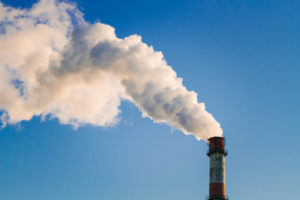ESG initiatives gain popularity every day. They can also be driven by boards, investors, shareholders, employees, communities, and employees. ESG initiatives and the growing trend towards environmental sustainability are attracting more attention from companies. This is a sign that many companies want to be recognized as leaders in environmental compliance. These two popular trends are why the Wisconsin Department of Natural Resources offers a voluntary program that allows Wisconsin companies to improve their business profitability by implementing environmental efficiencies. They also have the opportunity to lower the risk of environmental compliance. The program gives them regulatory flexibility and helps them comply with environmental regulations. The Green Tier program is a flexible and efficient way to comply with environmental regulations. They include:
-
Assignment of a Single Point Of Contact (SPOC).Participants in the Green Tier Program will be provided with a WDNR SPOC that can handle all environmental compliance matters. There are many environmental regulations that require interaction with a variety WDNR departments and regulators. It is therefore much more efficient and profitable to work with a single SPOC when addressing all environmental compliance issues for a facility.
-
Operational flexibilityParticipants are eligible to receive the lowest frequency of inspection by regulatory agencies as required by law. Participants also have the option of streamlined permitting, modified monitoring requirements and reporting requirements, as well as alternative compliance methods.
-
Deferred Civil EnforcementParticipants can also receive deferred civil enforcement from the WDNR for minor violations of environmental non-compliance, and liability protection if self-reported or self-corrected violations.
How to participate in this program.Participants can choose from Tier 1 or Tier 2. Tier 1 requires that participants develop and implement an Environmental Management System (EMS), similar or equivalent to an ISO EMS within one year of joining the Program. Tier 1 participants must perform an audit of their EMS each year after the first. They also need to have the EMS audited every three years by a WDNR-approved auditor. The Tier 1 participants must also agree to correct any non-compliance discovered during the annual audits. Tier 2 participants are those companies that have an established EMS and have a track record of high environmental performance. Tier 2 participants negotiate customized environmental agreements with the WDNR. These contracts include areas of current environmental regulations that a company wishes to change and new requirements for superior environmental performance. Tier 2 participants must, in addition to the requirements for Tier 1, perform an annual audit on the EMS system. This must be done by an external auditor.
Who is eligible to participate?Tier 1 applicants must have an environmental compliance record, without any convictions or criminal offenses from the Wisconsin Department of Justice. This must be done within the following timeframes:
-
There were no convictions within 60 months preceding the application date for criminal offenses where the facility or its actions caused substantial damage to or presented an imminent threat to public health and the environment.
-
No civil judgments that caused harm to the environment or public health within 36 months of the date of the application were filed.
-
Within 24 months of the date of the application, the facility did not receive a citation from WDNR. They also had a suit filed by the WDOJ against them to enforce an environmental obligation.
Tier 2 applicants must have an environmental compliance record, without convictions or criminal violations by the WDOJ, within the following timeframes:
-
No conviction was entered within 120 months of the date of the application for criminal violations involving covered facilities or activities that caused substantial harm to the environment or threatened the public health or environment.
-
No civil judgment was entered within 60 months of the date of application for violations involving covered facilities or activities that caused substantial harm to the environment or public health.
-
The WDOJ has not filed a lawsuit to enforce an environment requirement within 24 months of the date of application, and the WDNR have not issued a citation for enforcement of an environmental requirement due to a violation involving a covered activity or facility.
The Green Tier program provides a proactive approach to environmental efficiencies and identifies opportunities to reduce the risk of non-compliance. It also allows for regulatory flexibility from WDNR to comply with environmental regulations. Companies interested in high levels of environmental commitment should look into the program.
2022 von Briesen & Roper, s.cNational Law Review, Volume II, Number 94



